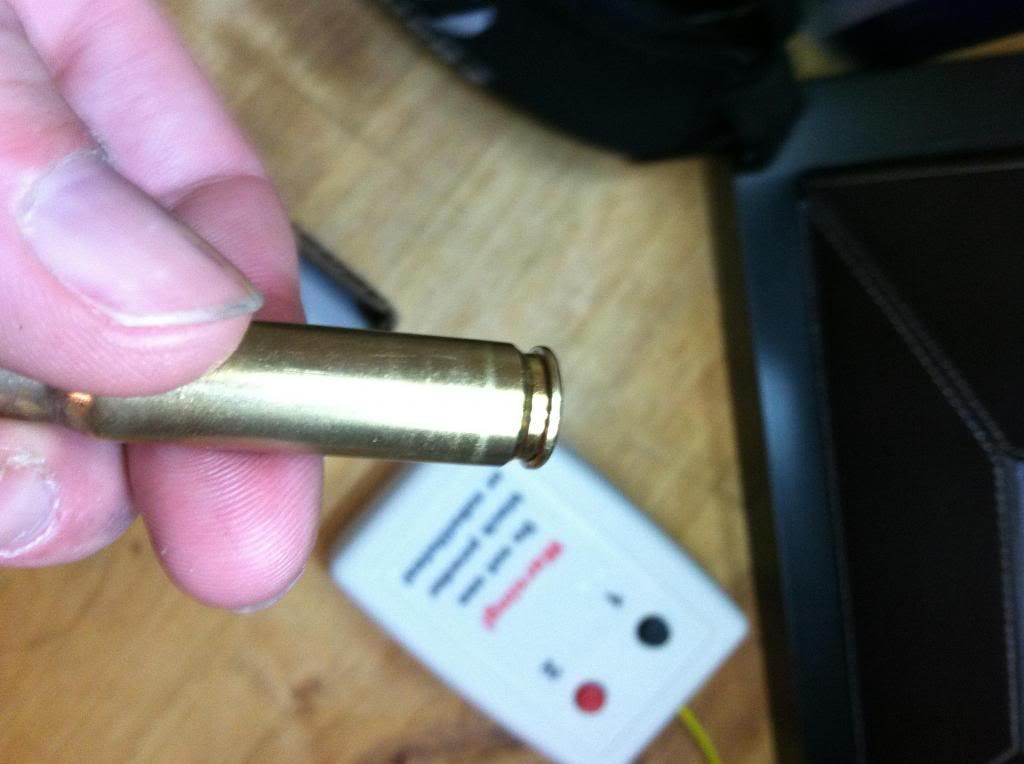Hi All,
I'm in the process of working up a FGMM clone load with LC 93 brass trimmed to 2.008", 175 SMKs seated to ~2.810", F210 primers, and Varget.
Today, I worked up to 42.9 grains (2527 fps) when I noticed a potential need to slow down. Figured it was worth asking those with more experience than I. My FGMM and my RL-15/FC brass hand load chrono @ 2570 fps out of my LAR-8 w/ 20" barrel. If it is safe, I still want to increase the charge of this LC brass/Varget combo until I match velocity of FGMM and my clone load.
I'm not seeing any flattened/cratered/leaking primers. The only thing I see that may be a little warning is...in the below picture, note the slightly bright ring just above the case head. It seems like this is a little too low to be impending case head separation but please let me know if I'm wrong. Is it possible that this light ring is from something other than too much pressure? Can I keep going if the case passes the "paper clip" test as long as I'm very cautious? Can this case be reloaded again or should I just toss it? Please feel free to contribute anything you may find helpful...(and please spare the read your reloading manual...I have and have worked up past published max loads a few times successfully). Thank you much,
Adam

I'm in the process of working up a FGMM clone load with LC 93 brass trimmed to 2.008", 175 SMKs seated to ~2.810", F210 primers, and Varget.
Today, I worked up to 42.9 grains (2527 fps) when I noticed a potential need to slow down. Figured it was worth asking those with more experience than I. My FGMM and my RL-15/FC brass hand load chrono @ 2570 fps out of my LAR-8 w/ 20" barrel. If it is safe, I still want to increase the charge of this LC brass/Varget combo until I match velocity of FGMM and my clone load.
I'm not seeing any flattened/cratered/leaking primers. The only thing I see that may be a little warning is...in the below picture, note the slightly bright ring just above the case head. It seems like this is a little too low to be impending case head separation but please let me know if I'm wrong. Is it possible that this light ring is from something other than too much pressure? Can I keep going if the case passes the "paper clip" test as long as I'm very cautious? Can this case be reloaded again or should I just toss it? Please feel free to contribute anything you may find helpful...(and please spare the read your reloading manual...I have and have worked up past published max loads a few times successfully). Thank you much,
Adam





